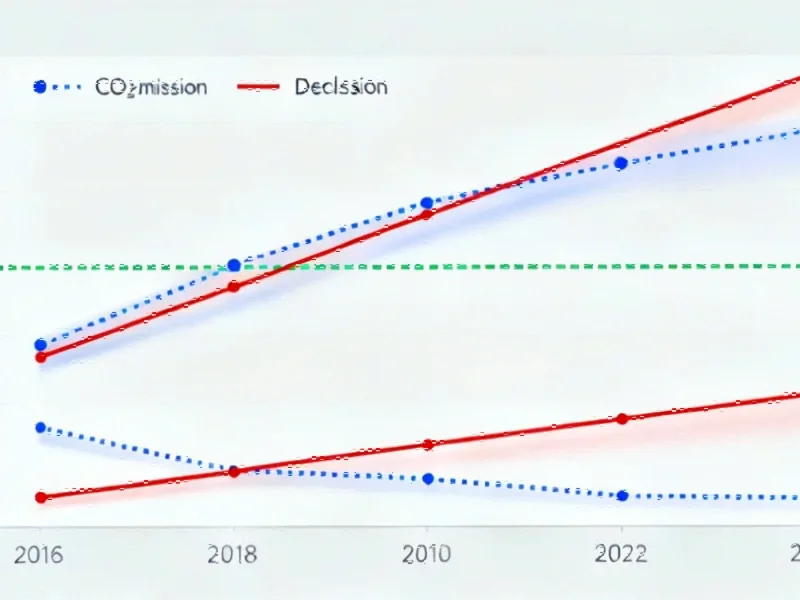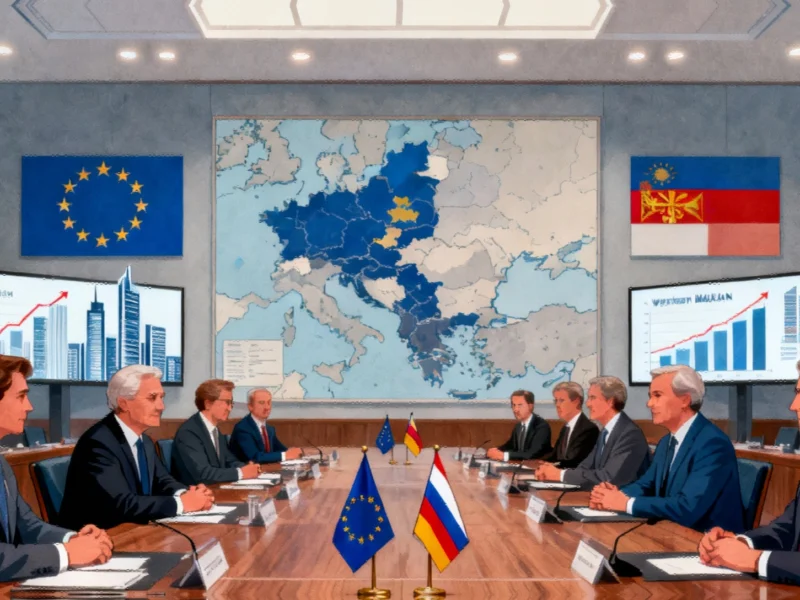The Paris Agreement’s Progress Paradox
New analysis covering the first nine years of the Paris Agreement’s implementation reveals a troubling trend: despite significant improvements in carbon efficiency across major economies, global carbon emissions have continued to rise. The comprehensive assessment, which extends methodology from previous climate models to include data through 2024, demonstrates how rapid economic growth has effectively canceled out environmental gains. This creates what researchers term a “super wicked problem” where desirable economic expansion directly conflicts with emission reduction targets.
Carbon Intensity Improvements Versus Economic Reality
The data reveals a stark contrast between carbon intensity performance and overall emission outcomes. While carbon intensity—the amount of carbon dioxide emitted per unit of GDP—improved by an impressive 25% globally between 2015 and 2024, total emissions actually increased by 5.6%. This improvement in efficiency, which exceeded the median projection of 20%, was overwhelmed by global economic growth of 41% over the same period. The situation illustrates how economic expansion undercuts global carbon reduction efforts despite technological and policy advances.
This dynamic is particularly evident when examining major economies. China achieved a remarkable 37% reduction in carbon intensity, exceeding both its NDC-1 target and median projections. However, the country’s emissions still grew by 18% due to exceptional economic growth. Similarly, the United States reduced emissions by 10% against a target of 15%, while Germany dramatically outperformed expectations with a 28% reduction in emissions. These national stories collectively demonstrate the challenging balance between economic development and environmental responsibility.
Technological Progress and Market Trends
While the overall picture presents challenges, several industry developments offer hope for accelerated decarbonization. Advances in computing efficiency and manufacturing processes have contributed to improved carbon intensity across multiple sectors. The growing demand for advanced semiconductors, as seen in TSMC’s recent performance, reflects how technological innovation can drive both economic growth and efficiency improvements.
Breakthroughs in materials science also show promise for transforming energy systems. Recent discoveries in superconductivity research could eventually enable more efficient energy transmission and storage systems. Meanwhile, digital transformation continues to influence multiple sectors, with platforms like Apple TV expanding into new content areas while potentially reducing the carbon footprint of entertainment consumption.
Communication and Coordination Challenges
The path to effective climate action requires improved coordination across multiple stakeholders. Recent related innovations in communication technology, such as WhatsApp’s developing message restrictions and anti-spam strategies, demonstrate how digital platforms are evolving to manage information flow more efficiently. These developments parallel the need for more effective international cooperation and policy coordination to address climate challenges.
Industrial Transformation and Leadership Changes
The industrial sector continues to undergo significant transformation as companies adapt to both climate imperatives and technological opportunities. Recent market trends show companies reorganizing leadership structures to better address emerging challenges, as evidenced by executive reshuffles focusing on AI and security. This corporate evolution reflects the broader need for organizational adaptation in response to climate pressures.
Future Projections and Policy Implications
The updated analysis reveals both encouraging and concerning trends for future climate outcomes. Projected annual emissions for 2100 have been revised downward from previous estimates, with the median projection now showing a 64% decrease rather than the previously anticipated 10%. Uncertainty about future emissions has also decreased dramatically, with the range of possible outcomes narrowing by 75%.
However, the impact on expected temperature increases remains modest. The median projected temperature increase by 2100 has only declined from 2.6°C to 2.4°C despite the improved emission projections. This highlights how much future climate change is already “baked in” due to cumulative emissions. The analysis also indicates that current commitments remain insufficient to meet Paris Agreement goals, with only a 17% probability of staying below 2°C warming under current trends.
The complex interplay between economic growth, technological innovation, and climate action continues to define the challenge of our time. While progress in carbon intensity demonstrates human ingenuity, the persistent rise in emissions underscores the scale of transformation required across global economic systems.
This article aggregates information from publicly available sources. All trademarks and copyrights belong to their respective owners.
Note: Featured image is for illustrative purposes only and does not represent any specific product, service, or entity mentioned in this article.



